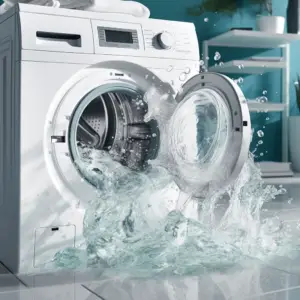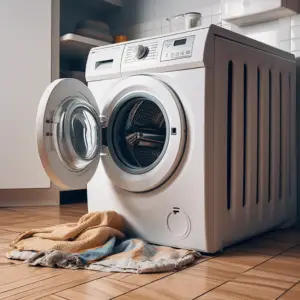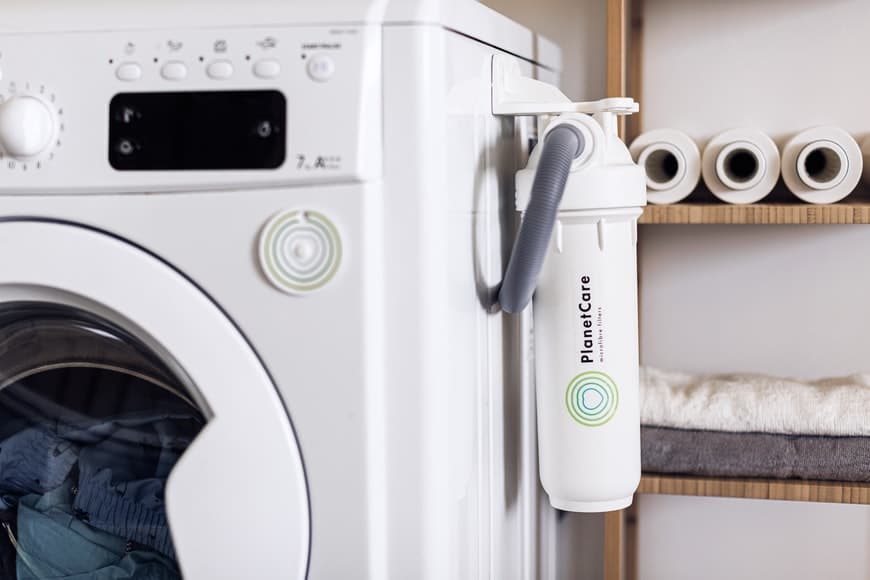We understand how frustrating it can be when you go to your laundry area to move a heap of clothes from the washer, but water remains in the washer tub even after the cycle is done.
There are several reasons why your washing machine won’t drain. Your washer may have a broken pump or a clogged drain hose. A faulty belt or broken lid could also be the culprit, but whatever the reason, you will need to determine the best drainage option for your washer.
Drainage systems, as used in washing machines, are responsible for ensuring that used dirty water is removed from the washer after every laundry phase. Therefore, if the drainage systems aren’t working properly, then you’re going to experience a ton of problems with your washer.
The good news is that there are different drainage options that you can choose for your washing machine according to your needs. In case you’re not sure about which method would work best for you, this article includes different aspects of various washing machine drainage systems.
Table of Contents
Washing Machine Drainage Options

Well, now that you understand the need for having a drainage system with your washing machine, let’s get closer to the drainage options to go along with:
Laundry Tub
To properly clean the clothes, it is essential to replace used dirty water when the wash cycle is running. A laundry tub is one of the best options that you can count on as a drainage system for your washing machine.
The drain hose of a washing machine is usually located above the ground about 25 to 30 inches above the ground. The laundry tub should be positioned below 12 to 18 inches beside the washing machine. Most washing manufacturers recommend this drainage option.
Standpipe
This is probably the easiest and the cheapest washing machine drainage option. Provided you have some knowledge about plumbing, you can easily install a standpipe for your washer drainage system and do the work by yourself. Otherwise, professional plumbers aren’t that much expensive.
For better results, go for a standpipe that is at least 2 inches in diameter so the water can flow properly. Well, a 1.5 inches standpipe can do the work, but things could block the water flow very quickly in a narrow drainage system.
Simply install the standpipe attached to the drainage hose of your washing machine. Make sure the pipe is thick enough for the water to pass smoothly. It is easy to install a standpipe. You just need to have some basic knowledge regarding plumbing.
However, if you’re not exactly certain about this, hiring professional plumbers for this job won’t cost much either. In fact, if you’re looking for an economical washing machine drainage option, one that saves you money and space, this is the one for you.
Underground Pipe Link
If you’re planning to use your washing machine for a long time at the same place, then an underground pipeline can be a great drainage option for you. However, it is likely to be more expensive than other methods.
The option involves the use of a standpipe, but some parts of it will go underground. The pipe will be attached to the drainage hose of washing and get down to the floor so that it pushes the water out of the house in your wastewater storage.
That said, however, this method is not recommended for people who are more into changing the location of their washing machines. The option is a bit troublesome because you’d have to dig your floor to set the pipe.
Still, if you want to change the location, you will need to dig the floor again to take out the pipe. You may want to reconsider before going for this option.
The Best Drainage Option for You
You will need to take a few factors into consideration before deciding on the most suitable washing machine drainage option. For instance, if you’re intending to be with the same washer for an extended period of time, then you may want to go with the underground pipe connection option.
Meanwhile, if you’re on a budget and want something that can work efficiently, then choose between a laundry tub and a standpipe.
Note that the laundry tub is quite space-consuming than the standpipe. Otherwise, the ultimate choice is completely dependent on your situation and preference.
Can You Drain a Washing Machine Outside?

If you’re looking for an option where you will not have to waste all the drained water from the washer, well, there’s a convenient option for that.
What you will need to do is extend the washing machine drainage pipeline outside your backyard to probably irrigate water plants or simply store the water in a tank for recycling purposes. So, here’s how to drain your washing machine outside:
Make a Plan
There are a few things you need to consider while planning to drain your washing machine outside. Determine where exactly you want to drain your washer and where the passage for drainage will go.
For instance, you might drain it to a barrel so that you can water your lawn in smaller bursts later, or you can simply connect the washing machine hose to your irrigation system.
Get the Tools and Equipment Required
You will need to get the tools, supplies, and equipment necessary for the task. So make a list of things you will need. If you want to drain the water from a part of the house that is rather far from the yard, you will need pipes.
If you want to go with the option of the barrel, then you will need a barrel that has a capacity of at least 41 gallons. This is the average water load from a washing machine.
Make a Routine and Evaluate
If you have decided to connect your washing machine with your lawn or yard, you will need to follow a proper routine to wash your clothes as this might affect the growth of your plants.
Consider the times and days that will be best for plants to be watered and wash your clothes on those days. Lastly, evaluate if everything is functional and works well. Make sure all hose connections and pipes are watertight to avoid leaks.
The Bottom Line
Now that you have some good washing machine drainage options, you can proceed and install the one that works best for your needs. Consider all the factors discussed above while choosing a drainage option.
Also, follow the basic steps that we have shared along with any additional idea that might be necessary for the washing machine you use.


